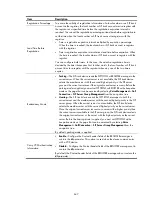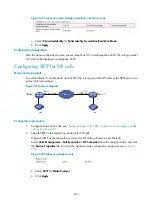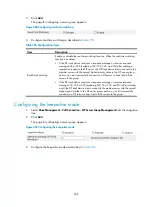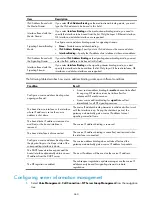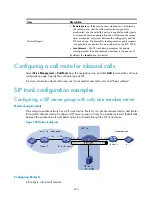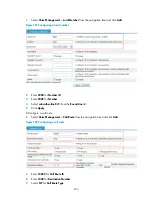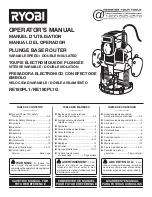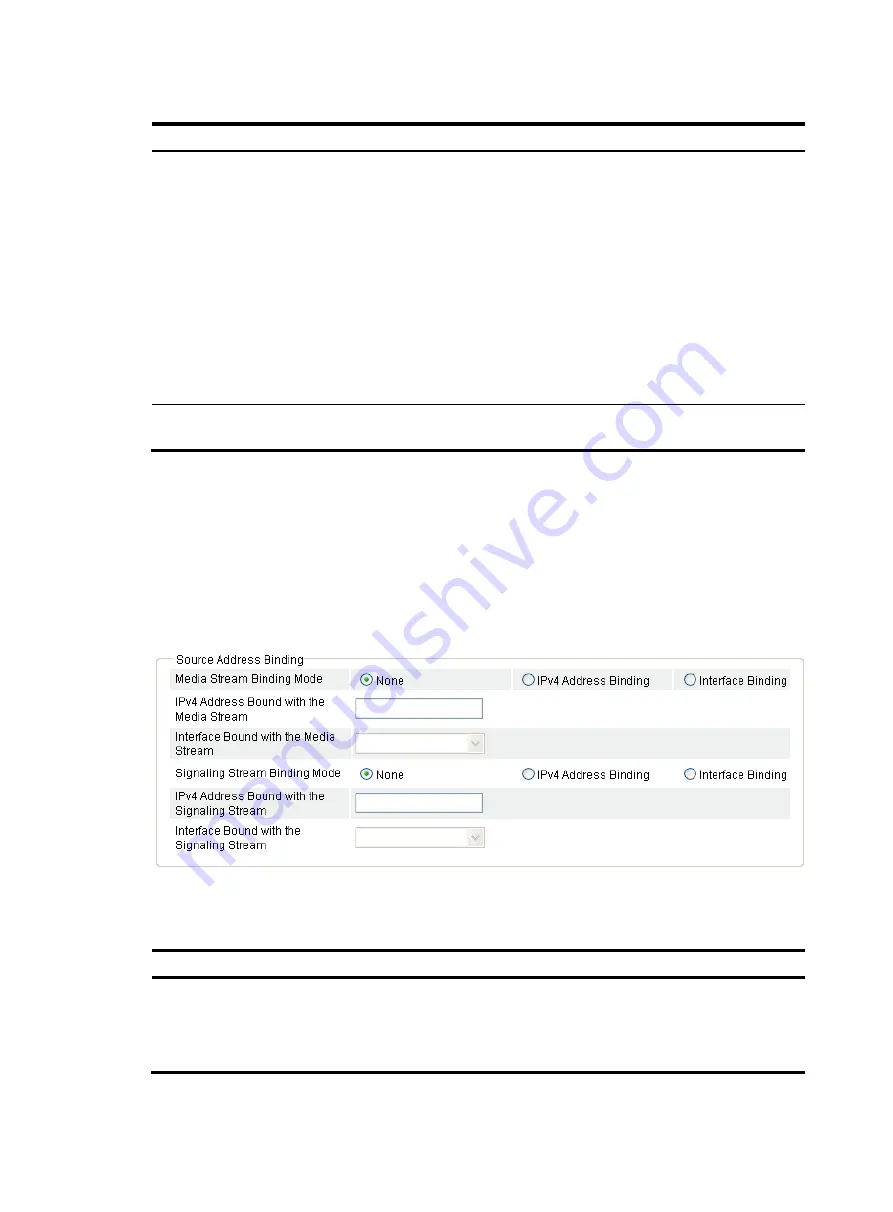
659
Table 256
Configuration items
Item Description
Keep-Alive Mode
The keep-alive function is used to detect whether the SIP servers in a SIP server
group are reachable. The SIP trunk device selects a server according to the detect
result and the redundancy mode. If the keep-alive function is disabled, the SIP trunk
device always uses the server with the highest priority in the SIP server group.
•
Disabled
—Disable the keep-alive function.
•
Options
—The SIP trunk device periodically sends OPTIONS messages to detect
the servers. If the SIP trunk device receives response message 408 or 5XX
(excluding 502, 504, 505, and 513) from a SIP server after sending an
OPTIONS message, it considers the SIP server unreachable.
•
Register
—The REGISTER message can be used to detect the SIP servers. If the
SIP trunk device receives response message 408 or 5XX (excluding 502, 504,
505, and 513) from a SIP server after sending a REGISTER message, it
considers the SIP server unreachable.
Interval for Sending
OPTIONS Messages
Set the interval for sending OPTIONS messages to the SIP servers when the
keep-alive mode is set to
Options
.
Configuring the source address binding mode
1.
Select
Voice Management
>
Call Connection
>
SIP Server Group Management
from the navigation
tree.
2.
Click
Add
.
The page for configuring a server group appears.
Figure 688
Configuring source address binding
3.
Configure source address binding as described in
Table 257
Configuration items
Item Description
Media Stream Binding
Mode
Configure source address binding mode for media streams.
•
None
—Disable source address binding.
•
IPv4 Address Binding
—Specify a static IPv4 address as the source address.
•
Interface Binding
—Specify the IP address of an interface as the source address.
Summary of Contents for MSR SERIES
Page 17: ...xv Documents 835 Websites 835 Conventions 836 Index 838 ...
Page 20: ...3 Figure 3 Initial page of the Web interface ...
Page 42: ...25 Figure 13 Firefox Web browser setting ...
Page 59: ...42 Figure 27 Checking the basic service configuration ...
Page 73: ...56 Figure 35 Sample interface statistics ...
Page 156: ...139 Figure 139 Rebooting the 3G modem ...
Page 168: ...151 Figure 152 Configuring Web server 2 ...
Page 174: ...157 Figure 158 Configure the URL filtering function ...
Page 242: ...225 Figure 233 Enabling the DHCP client on interface Ethernet 0 1 ...
Page 247: ...230 Figure 236 The page for configuring an advanced IPv4 ACL ...
Page 255: ...238 Figure 241 Advanced limit setting ...
Page 298: ...281 e Click Apply 2 Configure Router B in the same way Router A is configured ...
Page 400: ...383 Figure 387 Verifying the configuration ...
Page 405: ...388 ...
Page 523: ...506 Figure 530 Ping configuration page ...
Page 775: ...758 Figure 785 Configuring a jump node ...



